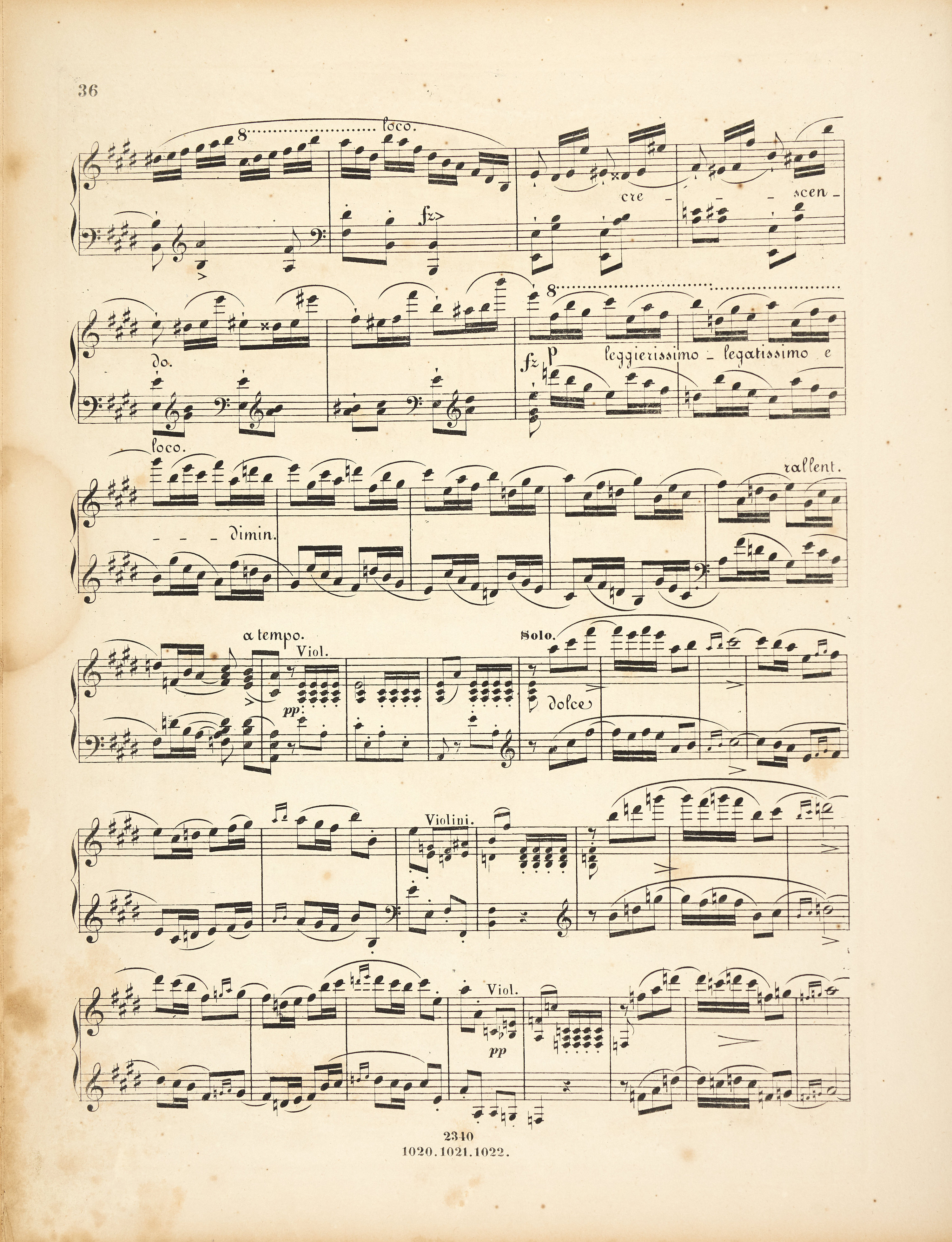



Articulation and phrasing of this theme (bars 171-209 and 415-453), marked primarily with slurs and less numerous staccato marks, pose editorial and interpretative problems. Particular phrases, in spite of their similar structure, show large disparities in this respect, a part of which must result from inaccuracies of notation (e.g. varying slurs for the R.H. and the L.H. in bars 182 or 204). On the other hand, it seems unlikely that all differences could be classified in such a manner – varying indications of phrases in bars 171-173, 187-189 and 415-417 must have been intentional. According to us, the following issues are most difficult to resolve:
- ranges of slurs in the places in which each hand is provided with different slurs. Fortunately, such situations are not numerous, which allows us to draw an important conclusion, additionally supported by pianistic intuition: Chopin wanted to have the same markings in the parts of both hands. It applies to bars 171-173, 182, 183, 204, 434.
- ranges of slurs in analogous places, in other words, determining which differences are probably intentional and which not. One can mention here, e.g. bars 174-175 and 204-205 or bars 175-176 and 183-184.
- presence of double slurs in the R.H. part in bars 179-181. According to us, those were not intended by Chopin; they result from a simplified or unfinished proofreading in which Chopin wanted to replace the original, short slurs with one longer slur (like in bars 171-173). It is indicated by Chopin's tendency, noticeable also in other pieces, to replace the initially written, shorter, often motivic slurs with longer ones, while refining the notation (cf. e.g. bars 496-497 or the Etude in C Minor, Op. 10 No. 12, bars 25-26 as well as the Mazurka in G Minor, Op. 24 No. 1, bars 36-37. Therefore, we consider the shorter slurs visible also in the L.H. to be original, and the longer slur put over them (in the R.H.) to have been added later and to represent Chopin's final decision with respect to slurring of those bars.
Compare the passage in the sources »
category imprint: Interpretations within context; Editorial revisions
issues: Authentic corrections of FE, Partial corrections
notation: Slurs



